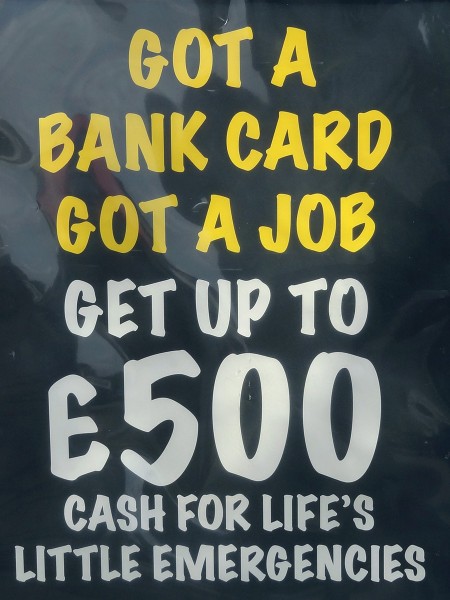 In an apparent U-turn, the Chancellor, George Osborne, has decided to cap the interest rates and other charges on payday loans and other short-term credit. As we have seen in previous news items, the sky-high interest rates which some of the poorest people in the UK are being forced to pay on these loans have caused outrage in many quarters: see A payday enquiry and Kostas Economides and the Archbishop of Canterbury. Indeed, the payday loan industry has been referred by the OFT to the Competition Commission (CC). The CC is required to report by 26 June 2015, although it will aim to complete the investigation in a shorter period.
In an apparent U-turn, the Chancellor, George Osborne, has decided to cap the interest rates and other charges on payday loans and other short-term credit. As we have seen in previous news items, the sky-high interest rates which some of the poorest people in the UK are being forced to pay on these loans have caused outrage in many quarters: see A payday enquiry and Kostas Economides and the Archbishop of Canterbury. Indeed, the payday loan industry has been referred by the OFT to the Competition Commission (CC). The CC is required to report by 26 June 2015, although it will aim to complete the investigation in a shorter period.
It was becoming increasingly clear, however, that the government would not wait until the CC reports. It has been under intense pressure to take action. But the announcement on 25 November 2013 that the government would cap the costs of payday loans took many people by surprise. In fact, the new body, the Financial Conduct Authority, which is due to start regulating the industry in April 2014, only a month ago said that capping was very intrusive, arguing that it could make it harder for many people to borrow and push them into the hands of loan sharks. According to paragraph 6.71 of its consultation paper, Detailed proposals for the FCA regime for consumer credit:
The benefits of a total cost of credit cap has been looked at by the Personal Finance Research Centre at the University of Bristol. This report highlighted that 17 EU member states have some form of price restriction. Their research was ambiguous, on the one hand suggesting possible improved lending criteria and risk assessments. On the other, prices may drift towards a cap, which could lead to prices increasing or lead to a significant reduction in lenders exercising forbearance. Neither of these latter outcomes would be beneficial for consumers. Clearly this is a very intrusive proposition and to ensure we fully understand the implications we have committed to undertake further research once we begin regulating credit firms and therefore have access to regulatory data.
The government announcement has raised questions of how imperfections in markets should be dealt with. Many on the centre right argue that price controls should not be used as they can further distort the market. 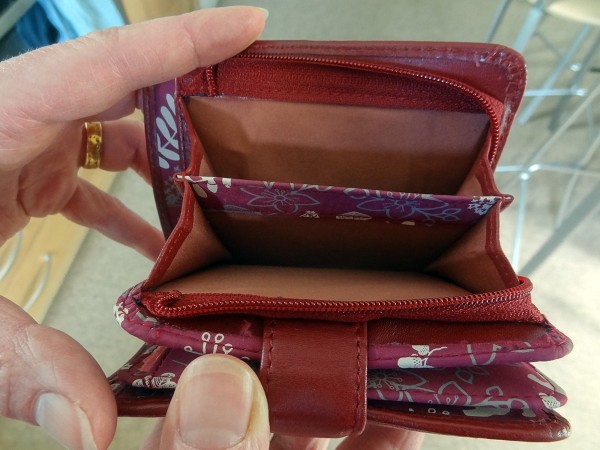 Indeed, the Chancellor has criticised the Labour Party’s proposal to freeze gas and electricity prices for 20 months if it wins the next election, arguing that the energy companies will simply get around the freeze by substantially raising their prices before and after the 20 months.
Indeed, the Chancellor has criticised the Labour Party’s proposal to freeze gas and electricity prices for 20 months if it wins the next election, arguing that the energy companies will simply get around the freeze by substantially raising their prices before and after the 20 months.
Instead, those on the centre right argue that intervention should aim to make markets more competitive. In other words, you should attempt not to replace markets, but to make them work better.
So what is the reasoning of the government in capping payday loan charges? Does it feel that, in this case, there is no other way? Or is the reasoning political? Does it feel that this is the most electorally advantageous way of answering the critics of the payday loan industry?
Webcasts and podcasts
 Payday Loans To Be Capped By Government Sky News (25/11/13)
Payday Loans To Be Capped By Government Sky News (25/11/13)
 New law to cap cost of payday loans BBC News, Robert Hall (25/11/13)
New law to cap cost of payday loans BBC News, Robert Hall (25/11/13)
 Osborne: ‘Overall cost’ of payday loans to be capped BBC Today Programme (25/11/13)
Osborne: ‘Overall cost’ of payday loans to be capped BBC Today Programme (25/11/13)
 George Osborne announces cap on payday loan charges amid concerns ITV News (25/11/13)
George Osborne announces cap on payday loan charges amid concerns ITV News (25/11/13)
Articles
UK to cap payday lenders’ interest charges Reuters, Steve Slater, Paul Sandle, Kate Holton and William James (25/11/13)
Capping payday loans: from light touch to strong arm Channel 4 News, Faisal Islam (25/11/13)
Payday loans: New law to cap costs BBC News (25/11/13)
Payday loan ‘risk to mortgage applications’ BBC News (26/11/13)
Q&A: Payday loans BBC News (25/11/13)
George Osborne is playing social democratic catch-up on payday loans The Guardian, Larry Elliott (25/11/13_
Payday loans cap: George Osborne caves in following intervention led by Archbishop of Canterbury Independent, Oliver Wright (25/11/13)
The principle, the practice and the politics of fixing payday loan prices: why? And why now? Conservative Home, Mark Wallace (25/11/13)
George Osborne and the risky politics of chutzpah New Statesman, Rafael Behr (26/11/13)
Chancellor too quick off the mark on payday lending cap The Telegraph, James Quinn (25/11/13)
Crap and courage of convictions: the political problem with Osborne’s payday loan plan Spectator, Isabel Hardman (26/11/13)
Payday loan calculator
Payday loan calculator: how monthly interest can spiral BBC Consumer (7/11/13)
Questions
- What types of market failing exist in the payday loan industry?
- What types of controls of the industry are being proposed by George Osborne?
- What is the experience of Australia in introducing such controls?
- What alternative forms of intervention could be used to tackle the market imperfections in the industry?
- What were the proposals of the FCA? (See paragraph 6.6 in its document, Detailed proposals for the FCA regime for consumer credit.)
- According to a representative example on Wonga’s website, a loan of £150 for 18 days would result in charges of £33.49 (interest of £27.99 and a fee of £5.50). This would equate to an annual APR of 5853%. Explain how this APR is calculated.
- The proposal is to allow a relatively large upfront fee and to cap interest rates at a relatively low level, such as 4% per month, as is the case in Australia. Explain the following comment about this in the Faisal Islam article above: “The upfront fee, in theory, should change the behavioural finance of consumers around taking the loan in the first place (there are ways around this though). So this is an intervention based not on lack of competition, but asymmetries of information in consumer finance.”
- Comment on the following statement by Mark Wallace in the Conservative Home article above: “If overpriced payday loans should be capped, why not overpriced DVDs, sandwiches or, er, energy bills?”
- Compare the relative advantages and disadvantages of George Osborne’s proposal with that of Justin Welby, the Archbishop of Canterbury (see the news item, Kostas Economides and the Archbishop of Canterbury).
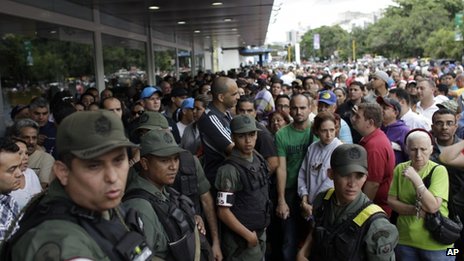 A remarkable event took place in Venezuela on Friday 8th November. Soldiers, on the orders of the president, temporarily occupied a chain of shops run by a leading electrical retailer called Dakar. The shops were forced to cut the prices of their electrical appliances and five managers were arrested and accused of ‘hiking up’ prices.
A remarkable event took place in Venezuela on Friday 8th November. Soldiers, on the orders of the president, temporarily occupied a chain of shops run by a leading electrical retailer called Dakar. The shops were forced to cut the prices of their electrical appliances and five managers were arrested and accused of ‘hiking up’ prices.
Unsurprisingly, news of these lower prices spread very quickly and long queues rapidly appeared outside the stores as people hoped to buy plasma televisions, fridges and washing machines at bargain prices. On Sunday 9th November, the president, Nicolas Maduro, gave a televised address in which he condemned the owners of the stores and announced that he was going to ask the National Assembly to grant him extra powers so that he could extend price controls to all consumer goods. He stated that he would next turn his attention to stores selling toys, cars, textiles and shoes.
The use of price controls in Venezuela is not new and dates back to 2003 when they were first introduced by the then president Hugo Chavez. Initially the regulations were imposed on various foods and basic goods. For example, by 2009 maximum prices had been set for cooking oil, white rice, sugar, coffee, flour, margarine, pasta and cheese. Businesses often complained that the maximum prices set by the government were below the costs of production. For example after a maximum price of 2.15 Bolivares was placed on a kilo of rice, producers argued that the cost of producing a kilo of rice was 4.41 Bolivares.
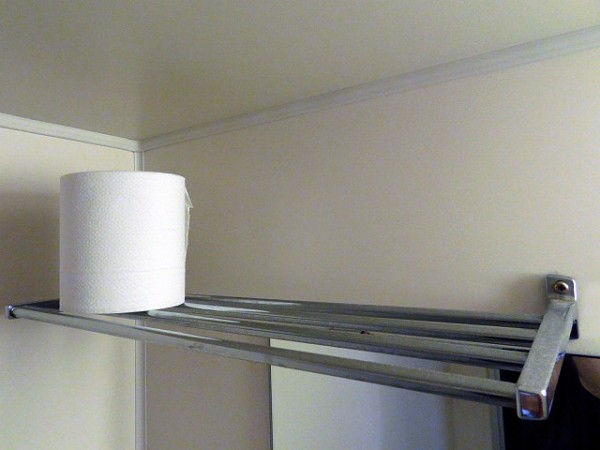 The impact of the maximum prices in Venezuela appears to have been exactly what the theories in the economics textbooks would have predicted – shortages, long queues of people waiting outside shops and a flourishing black market. An article on the shortage of toilet rolls has been discussed in a previous article on this news site: Shortages in Venezuela- what’s the solution? However this has not stopped the Venezuelan government extending the scheme and increasing the number of products that have maximum prices imposed on them. In 2011 Hugo Chavez argued that the policy was required because:
The impact of the maximum prices in Venezuela appears to have been exactly what the theories in the economics textbooks would have predicted – shortages, long queues of people waiting outside shops and a flourishing black market. An article on the shortage of toilet rolls has been discussed in a previous article on this news site: Shortages in Venezuela- what’s the solution? However this has not stopped the Venezuelan government extending the scheme and increasing the number of products that have maximum prices imposed on them. In 2011 Hugo Chavez argued that the policy was required because:
The market has…become a perverse mechanism where big monopolies, the big trans-nationals and the bourgeoise dominate and ransack the people.
Economics textbooks often include some analysis of the impact of price ceilings on a competitive market. The effects on consumer surplus, producer surplus and deadweight welfare are usually discussed. However the potential administrative costs are rarely considered. The Venezuelan case helps to illustrate how in practise these costs could be quite significant.
For example, in April 2012 price controls in Venezuela were extended to a range of 19 products including fruit juice, toilet paper, nappies, soap, detergent, deodorant, toothpaste, baby food, floor polish, mineral water and razor blades. This caused a reduction in prices of between 4% and 25%. However this did not simply mean setting 19 different maximum prices because the goods were all sold in different quantities or different package sizes. For example a tube of toothpaste could be purchased in 4 different sizes – 50ml, 75ml, 100ml and 150 ml. Therefore officials had to set 4 different figures. Nappies were sold in 12 different package sizes ranging from10 nappies/packet to78 nappies/packet. Once again this meant that the administrators had to set 10 different maximum prices just for nappies. In total across the 19 products government officials had to set prices for 616 different individual items!! Companies were given just one month to adjust to the new legislation.
Whenever maximum prices are imposed on a competitive market both frustrated buyers and sellers have an incentive to evade them and trade illegally. Therefore the government established a number of organisations in an attempt to make sure the prices were enforced. One agency is called The National Superintendency of Fair Costs and Prices or Sundecop. Officials from this agency were sent out to 82 retail outlets in April 2012 to try to make sure that firms were sticking to the new regulated prices. They also printed and handed out leaflets to the public informing them of the changes. Another agency is called ‘The Institute for the Defense of People’s Access to Goods and Services’ or ‘Indepabis’. This organisation launched a new strategy in June 2012 in order to monitor compliance. This included the creation of a network called the Friends of Indepabis which would act as an information point for members of the public to report illegal pricing. A new complaints phone line was also introduced.
If president Maduro is granted the power to extend maximum prices to all consumer products, then one can only begin to imagine the extra administrative costs involved with implementing the policy.
Venezuelan president Maduro ‘to expand price controls’ BBC News (11/11/13)
Venezuela sends in troops to force electronics chain to charge ‘fair’ prices NBC News (13/11/13)
Venezuela appliances crackdown spurs uncertainty ABC news (13/11/13)
Venezuela’s government seizes electronic goods shops BBC News (9/11/13)
Venezuelan government sends TROOPS into electronics chain to force them to sell goods at a “fair price” DailyMirror (10/11/13)
Shocher: Price Controls Lead to Shortages in Venezuela Free Advice, Robert Murphy (2/10/13)
Venezuelan Government Action against Overpricing Welcomed by Citizens, Manipulated by Media venezuelanalysis (12/11/13).
Questions
- Explain why a maximum price imposed on a competitive market might generate a shortage. Draw a diagram to illustrate and explain your answer.
- Are there any circumstances when a maximum price would not cause a shortage in a competitive market?
- Analyse the impact of a maximum price on consumer surplus, producer surplus and deadweight welfare loss. Assume the market is competitive and clearly state any other assumptions you have made in your analysis. Comment on the impact of the price ceiling on economic efficiency.
- Illustrate and explain what would happen to consumer surplus and deadweight welfare loss if the available goods for sale were only purchased by the consumers with the lowest willingness to pay.
- Why might a maximum price lead to a flourishing black market?
- The former president, Hugo Chavez, argued that the price regulations were required because “big monopolies… ransack the people”. Using economic theory discuss this statement. Examine the impact of a maximum price on a pure monopoly.
 No matter the product or service, price is always a key factor and never more so than in tough economic times. In most cases, prices are allowed to be determined by the forces of demand and supply, which gives the equilibrium price. However, in some cases, the government may choose to intervene with a price control, for example rent controls and the national minimum wage. Another market where there is also regulation is the airline industry and the Civil Aviation Authority have recently been criticized by Heathrow Airport for its price control plan.
No matter the product or service, price is always a key factor and never more so than in tough economic times. In most cases, prices are allowed to be determined by the forces of demand and supply, which gives the equilibrium price. However, in some cases, the government may choose to intervene with a price control, for example rent controls and the national minimum wage. Another market where there is also regulation is the airline industry and the Civil Aviation Authority have recently been criticized by Heathrow Airport for its price control plan.
Whenever we go on holiday, the price we pay for an airline ticket will depend in part on the airport we are taking off from and landing at, as they will charge the airline for landing fees, security, terminals etc. 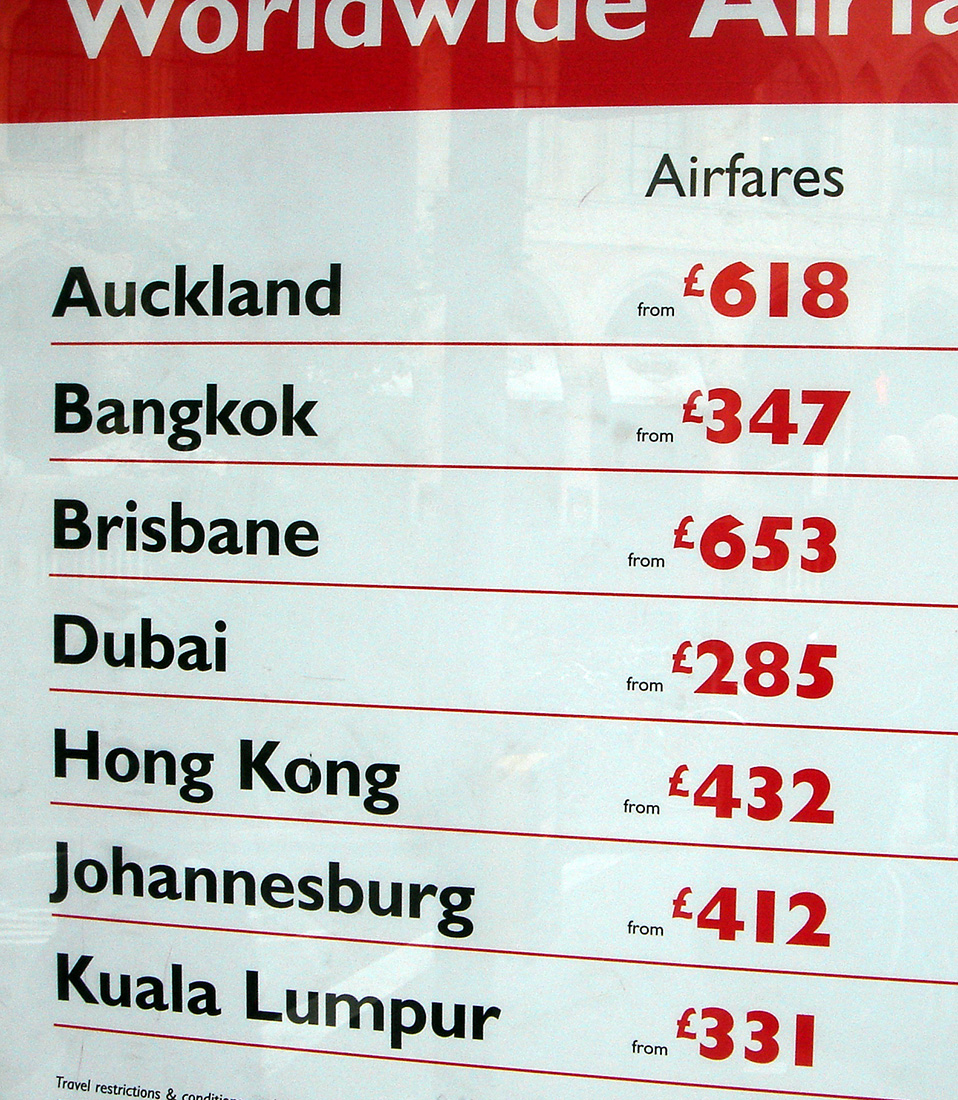 Heathrow airport had proposed that annual rises to its tariffs charged to airlines would increase by 4.6% above RPI inflation. However, this plan has been rejected by the CAA, which has said that the annual tariff rise between 2014 and 2018 should not be above the RPI. Though Heathrow are criticizing the CAA about this restriction, it is an improvement from the initial proposal which would have capped price rises at the RPI minus 1.3%.
Heathrow airport had proposed that annual rises to its tariffs charged to airlines would increase by 4.6% above RPI inflation. However, this plan has been rejected by the CAA, which has said that the annual tariff rise between 2014 and 2018 should not be above the RPI. Though Heathrow are criticizing the CAA about this restriction, it is an improvement from the initial proposal which would have capped price rises at the RPI minus 1.3%.
Controversy has naturally been created, with the CAA arguing that such price controls are needed to keep prices down and thus benefit consumers and retain the competitiveness of Heathrow airport. But, in contrast, Heathrow has argued that such a cap will put its competitive position under pressure and will risk future investment in the UK. But this isn’t the only criticism of the CAA. Airlines aren’t happy with the ruling either, arguing that the CAA has bowed to the pressure of Heathrow. The contrasting positions of the CAA, Heathrow and airlines are evident in the following quotes, firstly from the Chairwoman of the CAA:
The proposals will put an end to over a decade of prices rising faster than inflation at Heathrow. Tackling the upward drift in Heathrow’s prices is essential to safeguard its globally competitive position. The challenge for Heathrow is to maintain high levels of customer service while reducing costs. We are confident this is possible and that our proposals create a positive climate for further capital investment, in the passenger interest.
Secondly, from Heathrow’s Chief Executive:
This proposal is the toughest Heathrow has ever faced. The CAA’s settlement could have serious and far-reaching consequences for passengers and airlines at Heathrow … We want to continue to improve Heathrow for passengers. Instead, the CAA’s proposals risk not only Heathrow’s competitive position but the attractiveness of the UK as a centre for international investment. We will now carefully consider our investment plans before responding fully to the CAA.
And finally from the IAG Chief Executive, who said:
[The CAA] neglected its new primary statutory duty to further the interests of passengers by endorsing a settlement that allows the UK’s monopoly hub to ignore its inefficiencies and over-reward investors by imposing excessive charges … It is a bad day for customers who have been let down by the CAA.
Any price rise from the airports will be passed on to airlines and these in turn will translate into higher prices for customers. However, is there any truth to Heathrow’s claims that investment will be adversely impacted? As costs rise, profit margins and profit will fall, unless the revenue generated can increase. Price controls restrict the amount that prices can rise and thus unless demand increases by a significant margin, profits will decline. With lower profits, there will be less money for investment and arguably the service that customers face will also decline. However, the CAA suggests that Heathrow will be able to cut its costs and thus protect investment into the future, while retaining its competitive position globally by charging lower prices to airlines. This is unlikely to be the end of the journey, but for the moment, the CAA appears to have put its foot down. The following articles consider the battleground between the CAA and Heathrow.
Regulation in the passenger’s interest, support investment and driving competition The Civil Aviation Authority (3/10/13)
Passengers at Heathrow ‘face £1bn fares hike’ Independent, Matthew Beard (4/10/13)
 Heathrow airport attacks regulator’s price control plan BBC News (3/10/13)
Heathrow airport attacks regulator’s price control plan BBC News (3/10/13)
CAA proposed Heathrow charges rise in line with inflation The Telegraph, Rebecca Clancy (13/10/13)
Passengers face fare increases as Heathrow and Gatwick are allowed to up landing fees Mail Online (3/10/13)
Heathrow and airlines enraged by CAA price proposals The Telegraph, Alistair Osborne (3/10/13)
Heathrow attacks Civil Aviation Authority over airport charges Financial Times, Andrew Parker (3/10/13)
BAA considers life outside Heathrow as CAA backtracks on charges The Guardian, Gwyn Topham (3/10/13)
Heathrow charge plan disappoints all round Wall Street Journal, Peter Evans (3/10/13)
Questions
- What is the role of a regulator?
- Explain how the price control outlined by the CAA will affect Heathrow.
- If Heathrow is unable to cut costs, what is the likely effect? Using a diagram illustrate the impact on profitability if costs (a) can be reduced and (b) cannot be reduced.
- Why are the CAA being criticised by airlines and airports?
- How will customers be affected by Heathrow’s planned price rises and the CAA’s proposal?
- ‘Regulation in the airlines industry is essential to retain competitiveness.’ Evaluate the validity of this statement.
 Imagine that the team you support has made the final of a major competition or a your favourite band is playing a live concert this summer. You desperately want a ticket and are willing to pay the advertised price. They go on sale at 9.00am in the morning and you go on-line at 8.59am but unfortunately the webpage will not load. You keep pressing the refresh button but with no success. Eventually, annoyed and frustrated, you give up at 10.00am!
Imagine that the team you support has made the final of a major competition or a your favourite band is playing a live concert this summer. You desperately want a ticket and are willing to pay the advertised price. They go on sale at 9.00am in the morning and you go on-line at 8.59am but unfortunately the webpage will not load. You keep pressing the refresh button but with no success. Eventually, annoyed and frustrated, you give up at 10.00am!
Tickets for sporting, musical or other live shows are initially sold by people who organise the events in two ways. They may choose to sell some or all of the tickets directly to the customer. For example you can buy tickets for a West End show from the box office in the theatre. With some football games it is still possible to buy tickets on the day at the stadium. Another approach is to sell some or all of the tickets via an authorised ticket agent. These businesses are usually members of STAR (The Society of Ticket Agents and Retailers) and the organisers of the sporting, musical or live show provide them with tickets to sell on their behalf. Some of the larger and well known agents such as Ticketmaster, Ticketline and Seetickets usually sell the tickets at face value although some booking fees are often added to the price. This initial sale of tickets by either the event organiser themselves or an agent acting on their behalf is referred to as the primary market.
For example, British Athletics sold all of its 130,000 tickets for its two day Anniversary Games on the 26th and 27th July via its authorised ticket agent in 75 minutes!! However an internet search for this event will quickly reveal that tickets are still available!! Unfortunately in most cases the advertised price will be far greater than the face value of the ticket. How is this possible? The answer is that the internet has helped a thriving secondary market for tickets to develop. The secondary market refers to situations where people who have already purchased tickets through the primary market re-sell them to other members of the public. Prior to the internet the main way of buying a ticket in the secondary market was to visit the venue on the day of the event and hunt for some-one willing to sell. However technology has dramatically reduced these transaction costs and made it much easier for potential buyers and sellers to make an exchange. For example companies such as Viagogo, Seatwave, GetMeIn and Stubhub have created websites that allow members of the public to buy and sell tickets. As Viagogo publish on their webpage:
You are buying tickets from a third party, Viagogo is not the ticket seller. Ticket prices are set by the seller and may be above or below face value.
Why does this secondary market exist? An economist would argue that it can only happen if the quantity of tickets demanded is greater than the quantity of tickets for sale at the price set by the event organiser. If this was not the case then customers would be able to buy tickets through the primary market on the day of the match, concert or show. The puzzle is to explain why prices do not rise in the primary market. If the quantity demanded of any product is greater than the quantity supplied then market forces should put upward pressure on prices. However it would appear that many of the event organisers appear to resist this incentive and consistently set prices below the level that would limit demand to the number of tickets available. This leaves an opportunity for sellers in the secondary market to sell tickets much closer to their market clearing rate. Navin Kekane, the business operations director of Stubhub, stated that
What we do is all about supply and demand, and you can sometimes find tickets at below face value.
Some of these companies in the secondary market have recently established formal partnerships with a number of English Premier League (EPL) football clubs and other major sporting bodies. For example Viagogo have signed deals with 10 EPL clubs while Stubhub have deals with 3 EPL clubs as well as Leicester Tigers and the Lawn Tennis Association.
However some observers have expressed grave reservations about the growth of the secondary market. For example Malcolm Clarke, chairman of the Football Supporters Federation, stated that
At the moment if you are fan trying to sell a spare ticket and are not authorised to do so then you face a criminal conviction, even if you sell at the face value.
But secondary ticketing exchanges, because they are authorised, are allowed to do so. Many clubs grant these agencies the right to allow the re-sale of tickets for their matches at above face value. I don’t think that can be right.
Joe Cohen, the founder of Seatwave counters that
Touts is an emotional, dehumanising word. The reality is that they are just speculators. No one likes speculators until you need something from them.
Some have called for more regulation of the secondary market. For example Sharon Hodgson, Labour MP for Washington and Sunderland West, unsuccessfully tried to get a Private Members Bill through Parliament which would have made it illegal to re-sell tickets for more than 10% above their face value.
Articles
Secondary ticketing: Inflating sport prices or useful service? BBC News Bill Wilson (13/5/13)
Sold out: Are Rihanna, Rolling Stones and Justin Bieber fans being ripped off by so-called secondary ticket websites? The Daily Mail Adam Luck (19/1/2013)
Olympic anniversary athletics event sells out in 75 minutes The Guardian Owen Gibson (19/2/2013)
Is this a new golden age for ticket touts? The Observer Laura Barnett (14/4/2013)
5 live Investigates: ‘legalised ticket touting’ by Premier League clubs BBC Sport Andrew Fletcher (2/12/2012)
StubHub UK expands into Premier League Ticket News, Jean Henegan (4/9/12)
Football fans lose out on £64m of tickets due to absent season ticket holders Daily Telegraph, (16/8/12)
Questions
- Give some potential advantages for a football club or sporting body of using an authorised ticket agent to sell tickets in the primary market.
- Using a demand and supply diagram explain what happens in a market if the price is continually set below its market clearing rate. Illustrate and explain how mutually beneficial trade can take place in the secondary market at prices above those in the primary market.
- Can you explain why it is less likely for a secondary market to exist for cinema tickets than a popular West End show?
- Can you think of any reasons why it might be in the interests of a profit maximising organiser of a sporting or music event to sell tickets below the market clearing rate.
- What non-price methods could be used to allocate tickets for popular events? Consider some of the advantages/disadvantages of using these non-price methods.
- Do you think it is in the interests of society to allow people to re-sell tickets at a price above their face value?
The total EU budget in 2010 was €123 billion. Just under half of this (€58 billion) was spent on supporting agriculture. The programme of support – the Common Agricultural Policy (CAP) – has changed over the years. For a start, despite its being a large proportion of the EU budget, this proportion has actually been falling. In 1980, the CAP accounted for 69% of the EU budget; in 1990 it was 60%; in 2000 it was 52%; in 2010 it was 47%.
The types of support have also changed. The main method in the past was effectively to set minimum prices for various foodstuffs and for Intervention Boards to buy up any surpluses that arose from such prices being above the market equilibrium. Massive food ‘mountains’ resulted. Sometimes these surpluses were dumped on the world market; sometimes they were thrown away; sometimes they were simply kept in storage. Export subsidies and import levies (taxes) were also used to reduce surpluses. This, of course, was highly damaging to farmers in many countries outside the EU, especially in various primary exporting developing countries.
Reforms have taken place in recent years. The most important has been to replace high intervention prices with direct payments to farmers unrelated to current output. Whilst such payments still provide a substantial outgoing from the EU budget, being unrelated to current output, they do not encourage farmers to produce more and thus do not generate surpluses. Prices in most cases are allowed to be determined by the market.
The EU has just announced further reforms. These include:
• Capping total CAP spending at current levels until 2020
• Capping the total payment to any one farm to €300,000
• Relating subsidies to acreage rather than previous output
• Making 30% of the direct payments dependent on farmers meeting environmental criteria.
The following videos and articles examine the proposals and assess their likely benefits, their likely drawbacks and their likelihood of being implemented.
Videos
 EU plans to reform Common Agricultural Policy for farmers BBC News, Jeremy Cooke (12/10/11)
EU plans to reform Common Agricultural Policy for farmers BBC News, Jeremy Cooke (12/10/11)
 EU unveils controversial agricultural reforms Euronews (12/10/11)
EU unveils controversial agricultural reforms Euronews (12/10/11)
 Towards a new Common Agricultural Policy Euronews (14/10/11)
Towards a new Common Agricultural Policy Euronews (14/10/11)
 Queen to lose out in shake up of Europe’s farm payments Channel 4 News (12/10/11)
Queen to lose out in shake up of Europe’s farm payments Channel 4 News (12/10/11)
 Cautious welcome for EU agriculture policy shake-up STV News (12/10/11)
Cautious welcome for EU agriculture policy shake-up STV News (12/10/11)
 CAP reform proposals YouTube, Dacian Cioloş, European Commissioner for Agriculture and Rural Development (in French with English subtitles) (12/10/11)
CAP reform proposals YouTube, Dacian Cioloş, European Commissioner for Agriculture and Rural Development (in French with English subtitles) (12/10/11)
Articles
EU farm chief: CAP plans represent profound reform Reuters, Charlie Dunmore (12/10/11)
UK to dismiss Common Agricultural Policy reforms as inadequate Guardian, David Gow (11/10/11)
EU Farm Policy Debate Pits Top Receiver France Against U.K. Bloomberg Businessweek, Rudy Ruitenberg (12/10/11)
EU plans CAP reforms for ‘greener’ farm subsidies BBC News (12/10/11)
Common Agriculture Policy farm subsidy plan unveiled BBC News (12/10/11)
Q&A: Reform of EU farm policy BBC News (12/10/11)
CAP reform: Shepherd and steward of the land BBC News, Jeremy Cooke (12/10/11)
EU agriculture policy ‘still hurting farmers in developing countries’ Guardian: Poverty Matters blog, Mark Tran (11/10/11)
EU aid to farmers to continue over next decade Financial Times, Joshua Chaffin (12/10/11)
EU publications
CAP Reform – an explanation of the main elements Europa Press Release (12/10/11)
The European Commission proposes a new partnership between Europe and the farmers European Commission Press Release (12/10/11)
EU farm policy after 2013: Commission proposals welcomed with reservations European Parliament Press Release (12/10/11)
Legal proposals for the CAP after 2013 European Commission: Agriculture and Rural Development (12/10/11)
Questions
- Explain why the old system of price support under the CAP led to food surpluses. Use a diagram to illustrate your analysis.
- What is the significance of price elasticity of demand and supply in determining the size of these surpluses?
- What reforms have been introduced to the CAP in recent years? What effects have these had?
- Explain the new proposals for the CAP after 2013.
- What are the likely benefits of these proposals?
- What are the likely drawbacks of the proposals?
 In an apparent U-turn, the Chancellor, George Osborne, has decided to cap the interest rates and other charges on payday loans and other short-term credit. As we have seen in previous news items, the sky-high interest rates which some of the poorest people in the UK are being forced to pay on these loans have caused outrage in many quarters: see A payday enquiry and Kostas Economides and the Archbishop of Canterbury. Indeed, the payday loan industry has been referred by the OFT to the Competition Commission (CC). The CC is required to report by 26 June 2015, although it will aim to complete the investigation in a shorter period.
In an apparent U-turn, the Chancellor, George Osborne, has decided to cap the interest rates and other charges on payday loans and other short-term credit. As we have seen in previous news items, the sky-high interest rates which some of the poorest people in the UK are being forced to pay on these loans have caused outrage in many quarters: see A payday enquiry and Kostas Economides and the Archbishop of Canterbury. Indeed, the payday loan industry has been referred by the OFT to the Competition Commission (CC). The CC is required to report by 26 June 2015, although it will aim to complete the investigation in a shorter period. Indeed, the Chancellor has criticised the Labour Party’s proposal to freeze gas and electricity prices for 20 months if it wins the next election, arguing that the energy companies will simply get around the freeze by substantially raising their prices before and after the 20 months.
Indeed, the Chancellor has criticised the Labour Party’s proposal to freeze gas and electricity prices for 20 months if it wins the next election, arguing that the energy companies will simply get around the freeze by substantially raising their prices before and after the 20 months. Payday Loans To Be Capped By Government Sky News (25/11/13)
Payday Loans To Be Capped By Government Sky News (25/11/13) New law to cap cost of payday loans BBC News, Robert Hall (25/11/13)
New law to cap cost of payday loans BBC News, Robert Hall (25/11/13) Osborne: ‘Overall cost’ of payday loans to be capped BBC Today Programme (25/11/13)
Osborne: ‘Overall cost’ of payday loans to be capped BBC Today Programme (25/11/13) George Osborne announces cap on payday loan charges amid concerns ITV News (25/11/13)
George Osborne announces cap on payday loan charges amid concerns ITV News (25/11/13)



